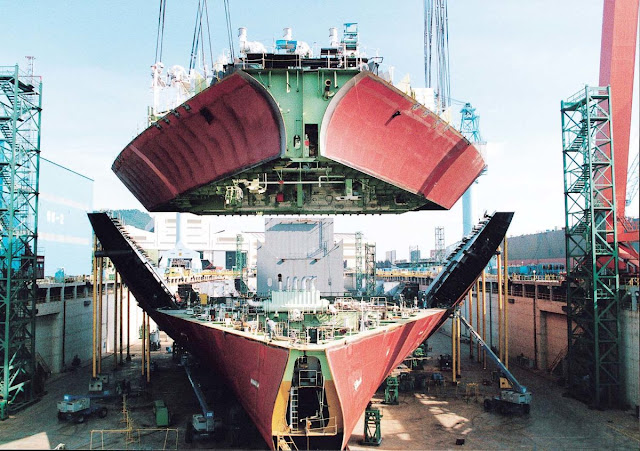Shipbuilding Market Connected with Global Trend of Expanding Ocean Economy
 |
| Shipbuilding Market |
Market Overview:
The
shipbuilding market consists of companies engaged in shipbuilding and repairing
activities. Shipbuilding involves the construction of ships and floating
vessels at specialized shipyards. Ships and floating vessels produced through
shipbuilding are used for purposes such as cargo transportation, cruising,
naval purposes, research, and offshore oil and gas exploration. Demand for
ships from the cargo transportation and cruise industries is driving the need
for frequent new ship orders and repair of existing ships, benefitting
shipbuilding companies.
Market key trends:
One of the key trends in the shipbuilding market is the global trend of
expanding ocean economy. Many nations are focusing on developing ocean
industries such as coastal tourism, marine biotechnology, seabed mining, ocean
renewable energy and more. This is generating demand for specialized marine
vessels and offshore structures. Additionally, global trade is growing
significantly and most cargo transportation happens through sea routes. Growing
international trade volumes are increasing the demand for cargo ships and tankers.
Another major trend is increasing repair and maintenance activities of the
existing fleet of ships. With ships plying global routes for longer periods of
time, there is a rising need for periodic repair, maintenance and retrofitting
services. This is benefiting ship repair divisions of major shipbuilding
companies.
Porter's
Analysis
Threat of new entrants: The Shipbuilding
Market Share requires massive capital investments and has significant
economies of scale advantages. These factors pose high barriers to entry for
new companies.
Bargaining power of buyers: The buyers in the shipbuilding market include cargo
vessels, oil tankers, bulk carriers and container ship owners. Their bargaining
power is moderate as they have limited alternatives for specialized vessels.
Bargaining power of suppliers: The suppliers of raw materials like steel have
moderate bargaining power due to consolidated supply chain and availability of
substitutes.
Threat of new substitutes: There are limited alternatives to water
transportation. Emerging technologies may pose threat in long run but barriers
are high presently.
Competitive rivalry: The shipbuilding market is highly competitive with
presence of major global players. Intense competition keeps profit margins low.
Key Takeaways
The global shipbuilding market is expected to witness high growth, exhibiting
CAGR of 3.9% over the forecast period, due to increasing maritime trade
globally.
The Asia Pacific region dominates the shipbuilding market, with majority of
share contributed by China, South Korea and Japan. These regions have strategic
locations and a large talent pool involved in shipbuilding.
Key players operating in the shipbuilding market include Hyundai Heavy
Industries, Daewoo Shipbuilding & Marine Engineering, China State
Shipbuilding Corporation, Mitsubishi Heavy Industries, Samsung Heavy
Industries, Imabari Shipbuilding Co., Ltd., Tsuneishi Group, China Shipbuilding
Industry Corporation, General Dynamics Corporation, Fincantieri S.p.A., Meyer
Werft GmbH & Co. KG, Navantia, Damen Shipyards Group, and STX Offshore
& Shipbuilding Co., Ltd. Major players are focusing on new contracts and
enhancing service offerings to strengthen market presence.
Read More:
https://www.marketwebjournal.com/shipbuilding-market-contributing-large-share/



Comments
Post a Comment